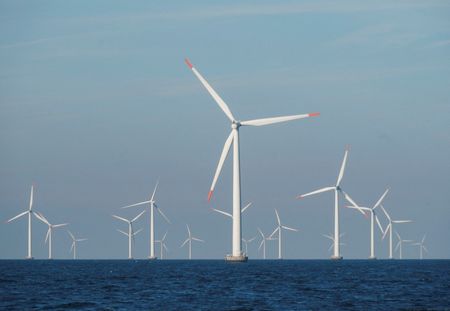TRENTON, N.J. — A New Jersey nonprofit organization is calling for greater transparency and a more thorough cost-benefit analysis of the proposed Atlantic Shores South Offshore Wind projects, citing concerns about their financial impact on residents, businesses, and coastal communities. Save Long Beach Island Inc. submitted a letter to the New Jersey Board of Public Utilities (BPU) on November 5, highlighting what it claims are “staggering” costs associated with the project.
According to the group, which has over 10,000 supporters, the two wind projects under consideration could cost New Jerseyans $110 billion over their lifespan. This figure, the group says, is nearly double the state’s 2025 budget of $55.9 billion. The costs include $73 billion in so-called “generic” expenses common to most offshore wind initiatives, along with $37 billion in costs tied specifically to the siting of turbines closer to shore.
“By law, the BPU needs to include an analysis of these costs in its required cost-benefit study to make a properly informed judgment,” wrote Bob Stern, president of Save Long Beach Island Inc., in the letter. He added that previous solicitations for offshore wind energy failed to account for many of these financial factors.
The letter identifies several categories of costs that the group believes should be incorporated into the BPU’s evaluation. Among the generic costs is a projected 12% increase in electricity bills for New Jersey’s residents, businesses, and industries. The group estimates that the higher rates could lead to an additional $20 billion in utility costs over the project’s lifetime.
State investments in infrastructure for offshore wind, including the Paulsboro Marine Terminal, the Salem County Wind Port, and the Sea Girt/Larrabee transmission system, also add to the financial burden, the group claims. To date, the state has allocated nearly $1.2 billion for these projects, with further spending planned. Save Long Beach Island Inc. argues that $3 billion of these costs should be attributed to the Atlantic Shores South projects.
Additionally, the group projects $40 billion in economic losses due to higher electricity rates, which it says would harm businesses and reduce jobs. A 2011 study cited in the letter estimates that a 2% rise in electricity costs leads to an annual loss of 2,219 jobs and a reduction in disposable income by $330 million statewide.
Save Long Beach Island Inc. also raises concerns about the impact of the Atlantic Shores projects on tourism and property values, particularly given the planned location of the turbines, some of which would be less than nine miles from the coast. A 2024 study commissioned by the group estimated that the projects could lead to a $33 billion loss in tourism revenue over their lifespan and the loss of 17,400 tourism-related jobs annually in Ocean and Atlantic counties.
The letter also references a 2008 study commissioned by the BPU, which found that visibility of offshore wind turbines significantly affects property values. The group estimates that oceanfront and ocean-view properties in areas like Long Beach Island and Brigantine Beach could lose billions of dollars in value, with cascading effects on nearby properties and municipal tax revenue.
The nonprofit also flagged concerns about the cost of decommissioning the turbines once they reach the end of their useful life. Citing a lack of detailed removal plans from both the state and Atlantic Shores developers, the group estimates that decommissioning and onshore processing could cost $10 billion, potentially leaving taxpayers responsible for the expense.
The letter further mentions potential costs associated with turbine failures, such as debris cleanup on beaches, which Save Long Beach Island Inc. says could total $1 billion or more over the project’s lifespan, particularly during tourist seasons.
The group has called on the BPU to include these factors in its cost-benefit analysis as it evaluates the Atlantic Shores South projects. It emphasized the importance of considering the unique costs of siting turbines close to the shore, which it claims were not adequately addressed in prior offshore wind evaluations.
“We await the Board’s award decision and cost-benefit analysis to see: (1) the full costs of the Atlantic Shores South project, (2) what benefit could outweigh this large cost in order to satisfy the State’s ‘net benefit’ test, and (3) how the extra $37 billion close-to-shore component can be justified compared to other projects,” Bob Stern wrote.

